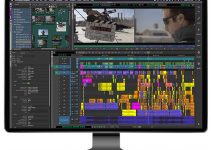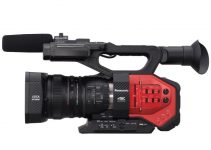Choosing a lens for your gear list is never an easy feat. When buying a new piece of glass predominantly used for video shooting, there is a slew of factors to consider in advance including build quality, mount type, aperture and focal length, bokeh aesthetic, chromatic aberration, sharpness, and more.
Prime lenses with longer focal length, for instance, are a common choice among filmmakers, not only for the ability to shoot objects at a more extended range but also for the pleasing visual aesthetics they tend to produce. So, if you’re considering buying an 85mm telephoto lens, in particular, Greg from camera rental company LensProToGo will help you to figure out which one to pick for your next production.
The lenses in this comparison above include the Sigma 85mm f/1.4 DG Art Lens, the Canon EF 85mm f/1.2L II USM Lens, and the recently introduced Canon EF 85mm f/1.4L IS USM Lens. To compare the three rivals, Greg put the lenses side by side and tried to spot for the differences in factors such as build quality and form factor, bokeh, detail, focus performance, and chromatic aberration.
Specs-wise, the Canon 85mm 1.4L IS comes in as the lightest of the bunch at 2.1 pounds, the Canon 1.2L weighs 2.25 pounds, and the Sigma is deemed the heaviest out of the three at 2.5 pounds. As for their filter size, the Canon 1.2L has a 72mm thread, the Canon 1.4L IS has a 77mm thread, and the Sigma Art comes out with the biggest thread size of a whopping 86mm. Regarding minimum focus distance, both the Canon 1.4L IS and the Sigma lenses have a minimum distance of 2.8 feet while the Canon 85mm 1.2L can focus on a subject from 3.2 ft at the closest.
Looking at the images shown in the video, the Canon 85mm 1.4L IS seemed to produce the sharpest and most detailed images out of the three. In fairness, the Sigma lens did come extremely close to the Canon 1.4L IS and performed so well that the difference in sharpness was pretty much negligible. Surprisingly, the Canon 1.2L lens didn’t seem to stack up against the other two lenses.
In regards to flares, reflections, and chromatic aberrations, the Canon 85mm 1.4L IS and Sigma Art lenses performed fairly well, producing images that dwarfed the performance of the Canon 1.2L lens, that of which featured some glaring flares and aberration issues.
When comparing autofocus performance, once again the Canon 1.4L IS and Sigma lenses take the cake, with the 1.4L IS lens edging out the Sigma lens by a few milliseconds. On the other hand, the Canon 85mm 1.2L lens was behind by a significant amount of time.
Before you discount the Canon 1.2 lens entirely, it did hold its own in a few scenarios. For instance, during the exposure test, the 1.2 lens was brighter considering it transmitted more light. As for the quality of the bokeh, both the Canon 1.4L IS and 1.2L lenses beat out the Sigma Art. Both counterparts produced more rounded, subtle edges while the Sigma lens had overly-defined, over-sharpened edges in the bokeh.
As a bonus, LensProToGo highlighted one feature that the new Canon 1.4L IS lens has over the others which is image stabilization. With this option enabled, you will find it easier to shoot handheld as the functionality makes a huge difference, no doubt about it. That’s something that also becomes evident when you look at the stills in the video comparing the performance with the feature toggled on and off. So, if you’re someone who’s going to shoot handheld frequently and prefer some sort of built-in image stabilization in your lens, then the Canon 85mm 1.4L IS lens would be your best bet.
Based on the results of the test, Greg concluded that there are really only two options to choose from: the Canon 1.4L IS lens and the Sigma 85mm Art Lens. Since they performed similarly during the tests, the only two things that set them apart is price and features. The Sigma lens comes in a few hundred dollars cheaper than the Canon 1.4L IS and produces images that are very close in quality.
Meanwhile, the higher price tag on the Canon 1.4L IS lens may be justified since you also get a weather-sealing design and built-in image stabilization. The decision between which lens you’ll want to get ultimately resides in what you need in general and how much you’re willing to pay for the extras.
[source: LensProToGo]
Order Links:
- Canon EF 85mm f/1.4L IS USM Lens (B&H, Amazon US)
- Canon EF 85mm f/1.2L II USM Lens (B&H, Amazon US)
- Sigma 85mm f/1.4 DG HSM Art Lens (B&H, Amazon US)
Disclaimer: As an Amazon Associate partner and participant in B&H and Adorama Affiliate programmes, we earn a small comission from each purchase made through the affiliate links listed above at no additional cost to you.



